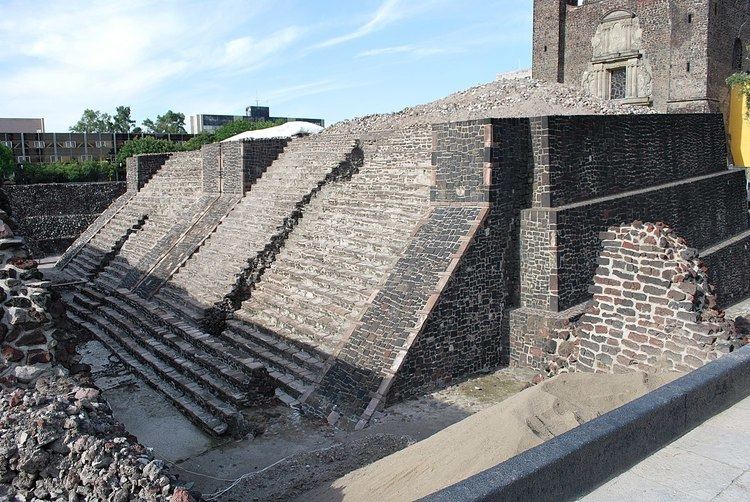Capital Not specified Government Monarchy Date dissolved 1521 | Founded 1337 | |
 | ||
Religion Pre-Columbian Nahua religion | ||
Conmemoran en xalapa el 43 aniversario de la matanza de tlatelolco
Tlatelolco (Classical Nahuatl: Tlatelōlco [tɬateˈloːɬko], modern Nahuatl pronunciation ) (sometimes also called Xaltelolco) was a pre-Columbian Nahua altepetl (town, city) in the Valley of Mexico. Its inhabitants were known as Tlatelolca. The Tlatelolca were a part of the Mexica ethnic group, a Nahuatl speaking people who arrived in what is now central Mexico in the 13th century. They settled on an island in Lake Texcoco where they founded their city on the northern part — the other Mexica group, the Tenochca, founded their city Tenochtitlan on the southern part. The city was closely tied with its sister city, which was largely dependent on the market of Tlatelolco, the most important site of commerce in the area.
Contents
The Tlatelolco (archaeological site) is an archaeological excavation site in Mexico City, where the remains of the pre-Columbian city-state of Tlatelolco have been found. It is centered on the Plaza de las Tres Culturas, a square surrounded on three sides by an excavated Aztec site, a 17th-century church called Templo de Santiago, and the modern office complex of the Mexican foreign ministry. In February 2009, the discovery of a mass grave with 49 human bodies was announced by archaeologists. The grave is considered unusual because the bodies are laid out in ritual fashion.
History
In 1337, thirteen years after the foundation of Tenochtitlan, the Tlatelolca declared themselves independent from the Tenochca and inaugurated their first independent Tlatoani (ruler). Under the king Cuacuauhpitzahuac (1376–1417), the first two stages of the Main Pyramid of Tlatelolco were constructed. Under Tlacateotl, the Tlatelolca assisted the Tenochca in the war against the Tepanecs; shortly thereafter, the first war between the Tenochca and Tlatelolca erupted. Also during Tlacateotl's reign, the third stage of the Main Pyramid was constructed. Under Cuauhtlatoa (1427–1467), the Tlatelolca conquered the citystate of Ahuilizapan (now Orizaba, Veracruz), and fought against the people of Chalco along with the Tenochca. The fourth and fifth stages of the Main Pyramid were constructed in this period. The ruler Moquihuix constructed the sixth stage of the temple, but in 1473 he was defeated by the Tenochca Tlatoani Axayacatl, and Tlatelolco was subjugated to Tenochtitlan. Itzcuauhtzin ruled Tlatelolco during a period in which it was almost completely incorporated into Tenochtitlan.
After the Spanish Conquest in 1521, Tlatelolco became a municipality of New Spain, and was renamed Santiago Tlatelolco. Tlatelolco remained an important location, partly because of the foundation there of the university Colegio de Santa Cruz de Tlatelolco, which was the first school of higher learning in the Americas. Today its remains are located within Mexico City.
